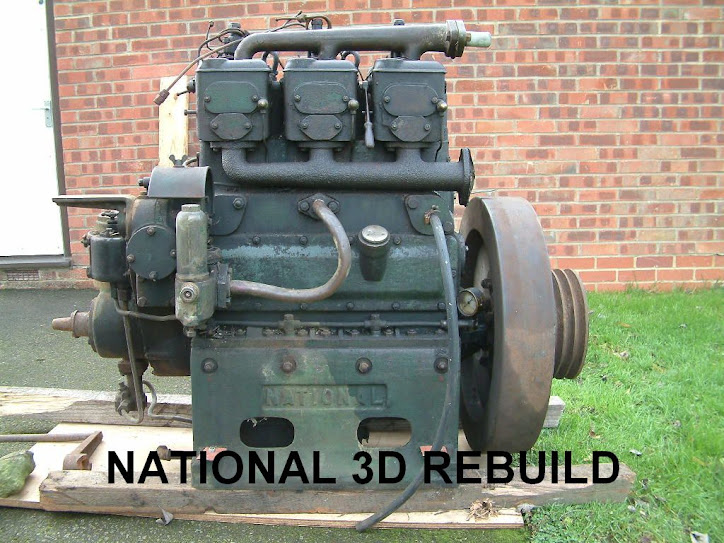One of the big outstanding issues is the governor arrangement on the engine. The majority of Nationals and Russell Newbery engines have horizontal governors. Not the case in my engine.
It has its own casing that is mounted on the end of the timing casing and is a vertical arrangement. The centrifugal governor weights are at the top of a vertical shaft (with the connections to the speed controller and the fuel pump), whilst the oil pump is at the bottom.

To be fair, at the moment its a bit of an 'un-known' as to how well it will control engine speed throughout the required range of 250 - 1,000 rpm.
If the engine originated from a generating set, it is almost certainly set up to run at constant speed. The governor then adjusts the fuel rack to ensure a constant speed irrespect of load on the alternator.
On my linkage from the governor to the fuel pump there is a lever and cam arrangement. From what I can work out, this appears to be a rudimentary speed control. But how redamentary is it?

One school of thought is that it may be a speed controller to slightly adjust the 'constant running speed' for frequency control. Say +/- 20 rpm. If that is the case, it may prove difficult to control the lower speed ranges required (but not impossible!).
The other school of though is that it is full range speed controller. This is the one I like because it will work perfectly - forever the optimist! A few clues have revealed themselves:
1. All of the industrial generator sets that I have seen usually have the engine plate marked up as: '##hp at ####rpm' or 'operating speed: ####rpm', etc. My engine plate just gives Engine Type and Engine Number.
2. When I cleaned up the cam linkage it had two marks on it with arrows to a fixed mark. One said 'WORK', the other was unmarked (but why have it?). I'm hoping the unmarked arrow is 'idle'.

To be honest, until the Black Beast is fired up, I'll not know (unless anyone else knows differently??). Even if it is a constant speed unit, a bit a playing with the spring tension and cam profiles should be able to sort it (there goes the optimist again!).
Needless to say, it is now subject if stripping down, degreasing, cleaning, wire brushing, painting etc, etc.

No comments:
Post a Comment